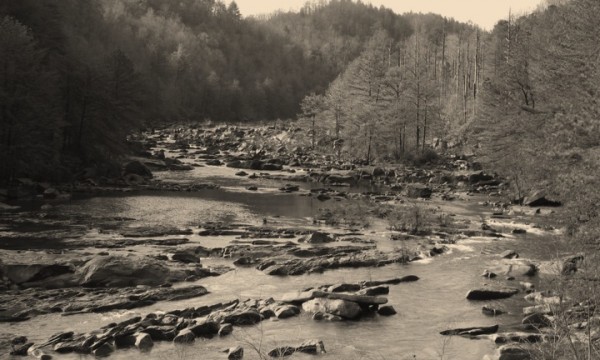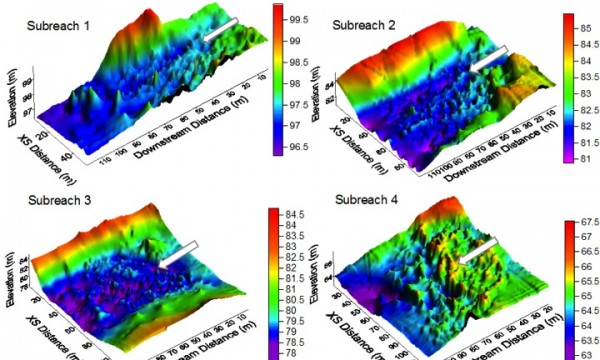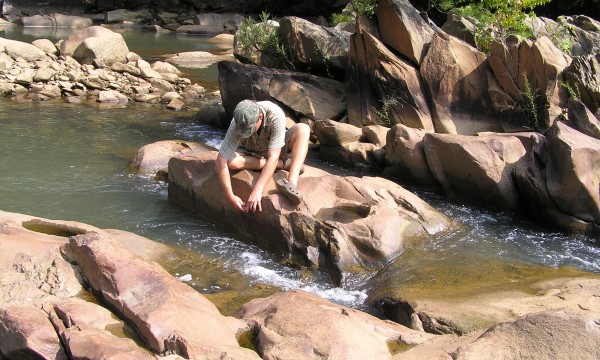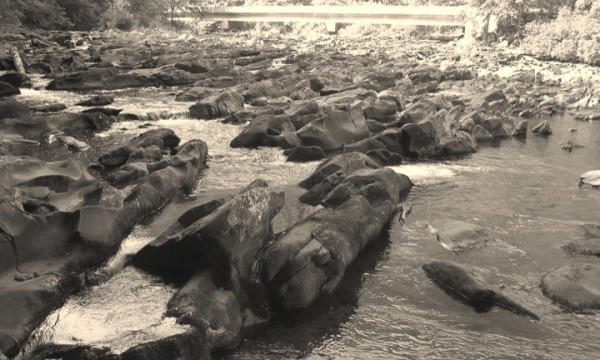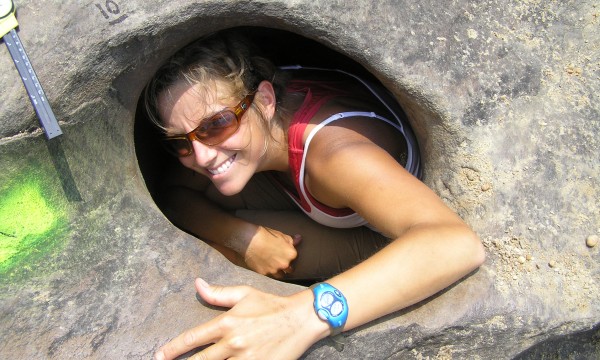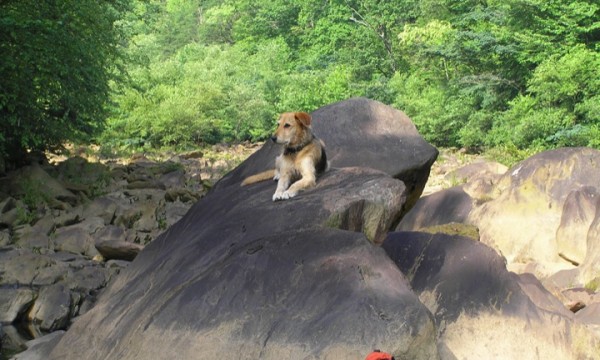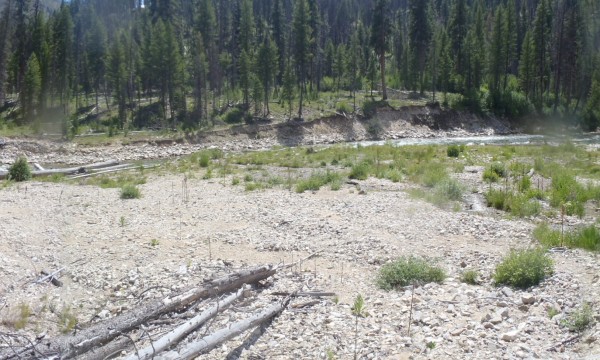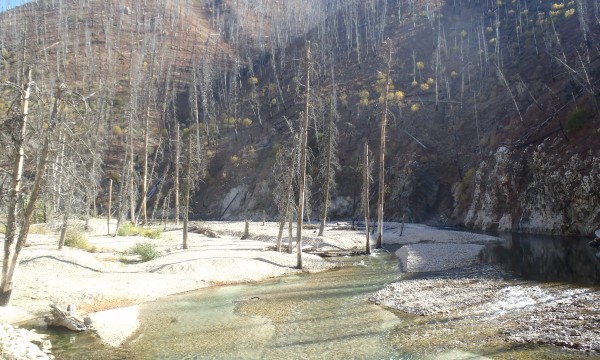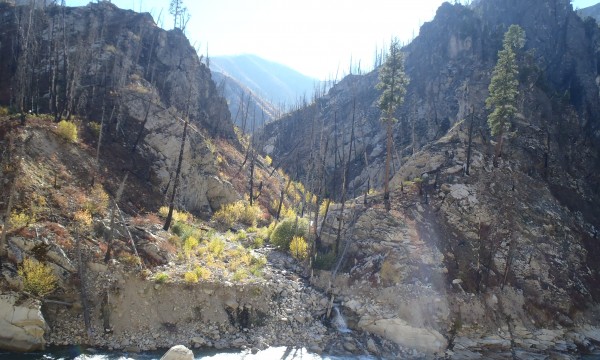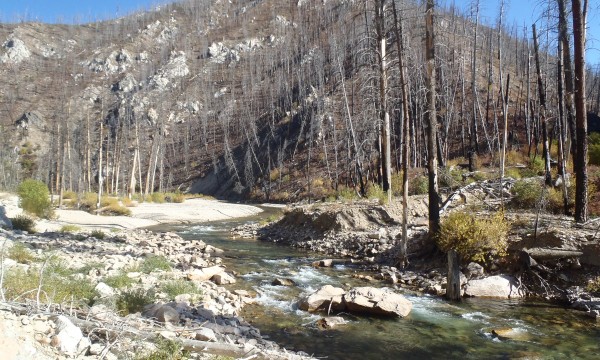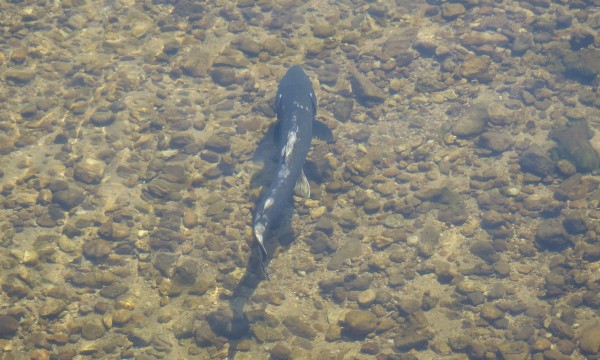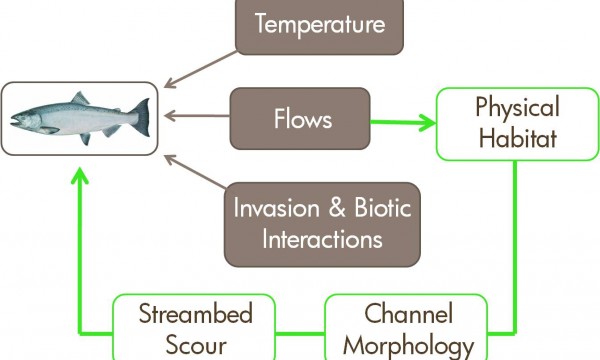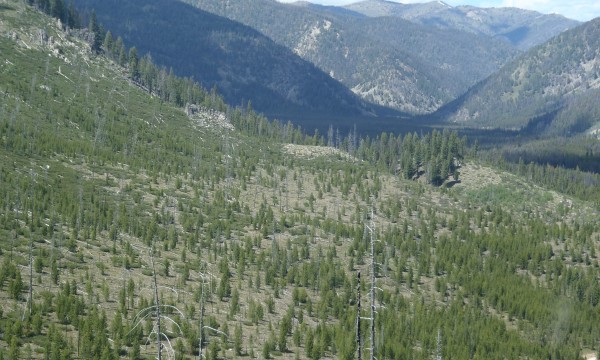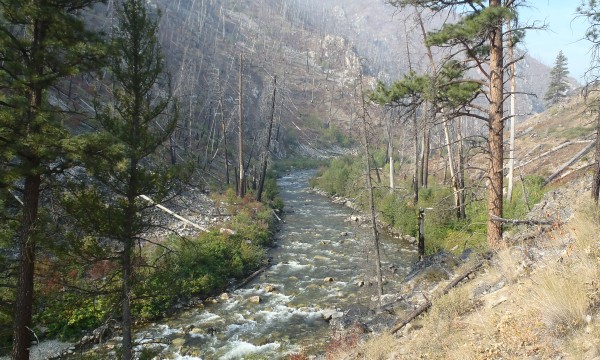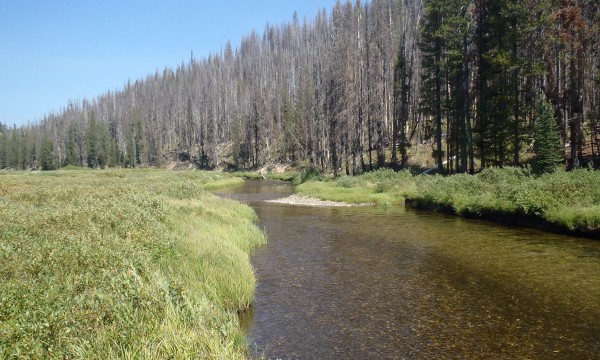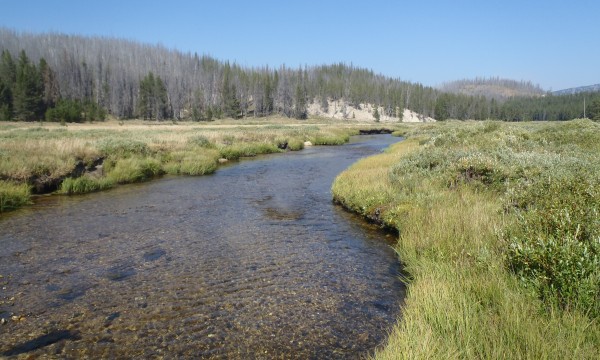Dissertation: Bedrock river forms and processes
I completed my doctorate in Geosciences, specializing in fluvial geomorphology, at Colorado State University in May 2009. My dissertation entitled, “Substrate controlled interactions among hydraulics, sediment transport and erosional forms in a bedrock river,” was conducted in the Blue Ride province in the southern Appalachian mountains. Key Findings 1) Feedbacks between substrate, channel morphology and hydraulics reflect balance between hydraulic driving forces and substrate erodibility. 2) Lithologically controlled bed forms in bedrock streams (bedrock ribs) influence sediment transport at potentially smaller scales than bed forms in alluvial channels. The strong influence of bedforms on coarse sediment transport suggested that coarse sediment transport processes are controlled by different factors in bedrock channels when bedrock ribs cross the channel at a high angle to the flow. 3) The tools versus cover effect represents intra-reach variation and can be used to quantify how flow and sediment transport interact with bed topography to maximize pothole formation. Constraining thresholds governing pothole formation will improve understanding […]
Images from this gallery






